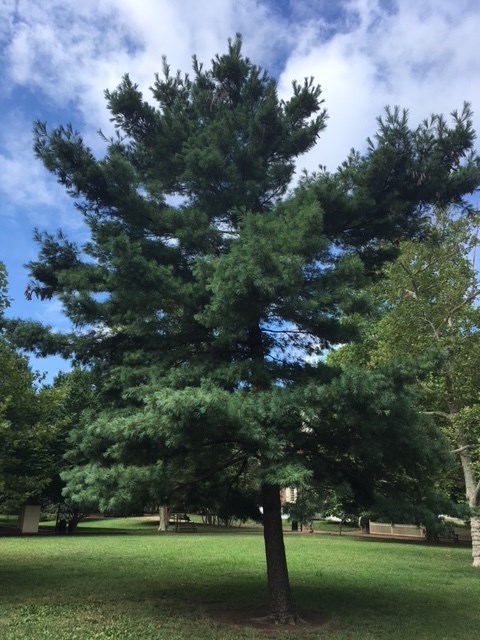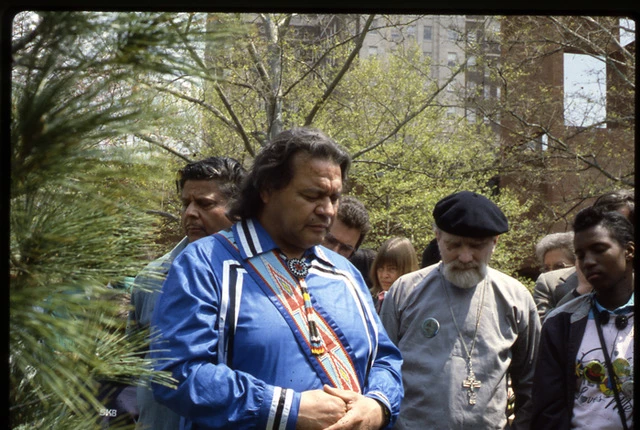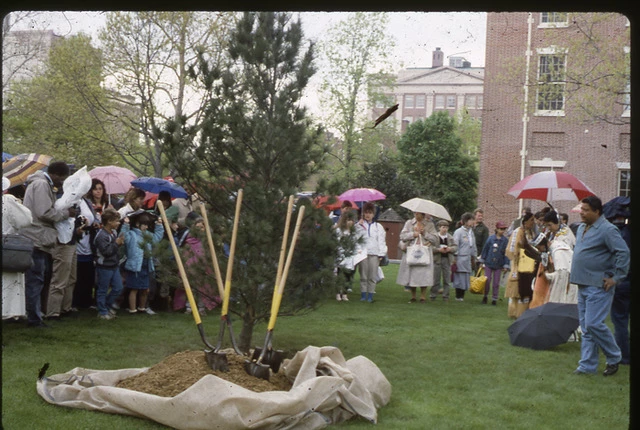Part of a series of articles titled The Treaties of Fort Stanwix.
Article
Tree of Peace

NPS Photo
In July of 1775, the Continental Congress prepared a message for a meeting in Albany, NY with the Iroquois Nation of New York, requesting that the powerful Iroquois Confederacy remain neutral in the war between the colonists and Great Britain. Part of their message reads, “Brothers! We live upon the same ground with you. The same island is our common birth- place. We desire to sit down under the same tree of peace with you: let us water its roots and cherish its growth, till the large leaves and flourishing branches shall extend to the setting sun, and reach the skies.”
The tree of peace our founding fathers alluded to was the White Pine, the symbol for the Iroquois Constitution, known as "the great law of peace." According to oral tradition, the leaders of the Iroquois Confederacy planted a white pine after its founding in the 15th century. The Iroquois Confederacy originally included five tribes, the Mohawk, Seneca, Cayuga, Onondaga, and Oneida, and later joined by the Tuscarora. The territory they controlled included large parts of what is now New York.
On April 28, 1988 Jake Swamp, a Mohawk chief of the Iroquois Grand Council, planted a white pine on the lawn north of the First Bank during a ceremony co-sponsored by the 11th grade students of Mastbaum Vocational –Technical School, the United Americans of Delaware Valley, and Moonstone, Inc., a non-profit organized in 1983 to promote education through the arts. Jake Swamp founded the Tree of Peace Society to spread peace among all peoples. As reported, he explained, “Many years ago, man depended on his own judgement and strayed away from the original instruction, giving birth to greed, jealousy, warfare and destruction.” He wanted people to return to their roots, for “when the creator made the world, he intended people to always live at peace with one another.”
Chief Swamp explained to the crowd of some fifty children and adults in attendance at the planting ceremony, that the white pine was the living symbol of the great law of peace, the foundation for the Iroquois Constitution. The white pine, once used to unite the warring five Iroquois nations, marked “our willingness to work together for peace and protection.” Chief Swamp’s young son gave the traditional blessing on the tree, and the Chief offered a prayer in his native Mohawk language. Chief Swamp closed the ceremony by encouraging each person to toss a pebble around the newly planted tree, symbolic of throwing aside feelings of hatred and prejudice. “We are teaching the young children to gather their minds as one and direct their thoughts to the earth,” he declared. “This tree will grow tall and straight, one heart, one direction. Our people will live together and make ourselves a symbol of peace.”
In October of 1988, The U.S. Senate passed a Concurrent Resolution to “acknowledge the contribution of the Iroquois Confederacy of Nations to the development of the United States Constitution and to reaffirm the continuing government- to- government relationship between Indian tribes and the United States established in the Constitution.”
In 1981, the United Nations passed the unanimous resolution to celebrate International Peace Day around the world annually on September 21, for all humanity to commit to peace above all differences and to contribute to building a culture of peace.
Chief Jake Swamp passed away in 2010, and the tree turns 37 years old in 2025. Native American history is American history, and Independence National Historical Park is proud to tell this part of our nation’s story. You can visit the Tree of Peace at the southwest corner of Third and Chestnut Street.

Courtesy of Peggy Hartzel

Courtesy of Peggy Hartzel.
Last updated: November 18, 2024
